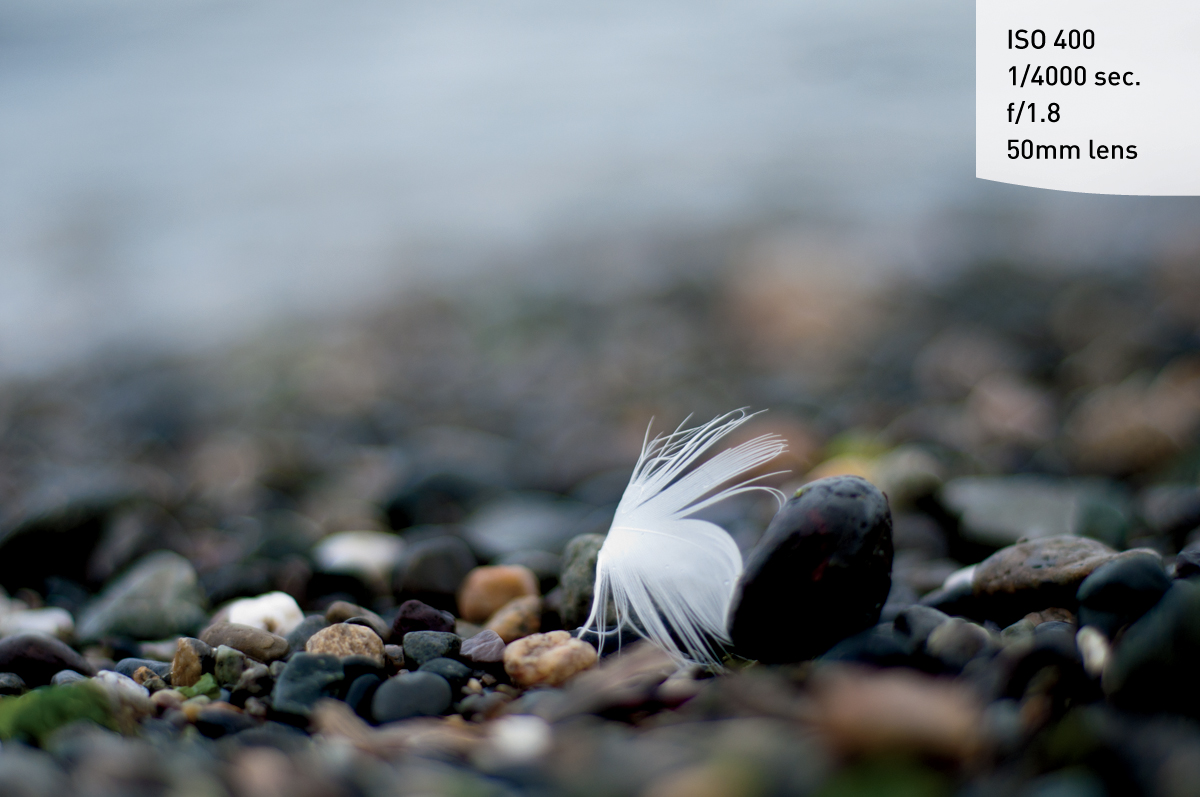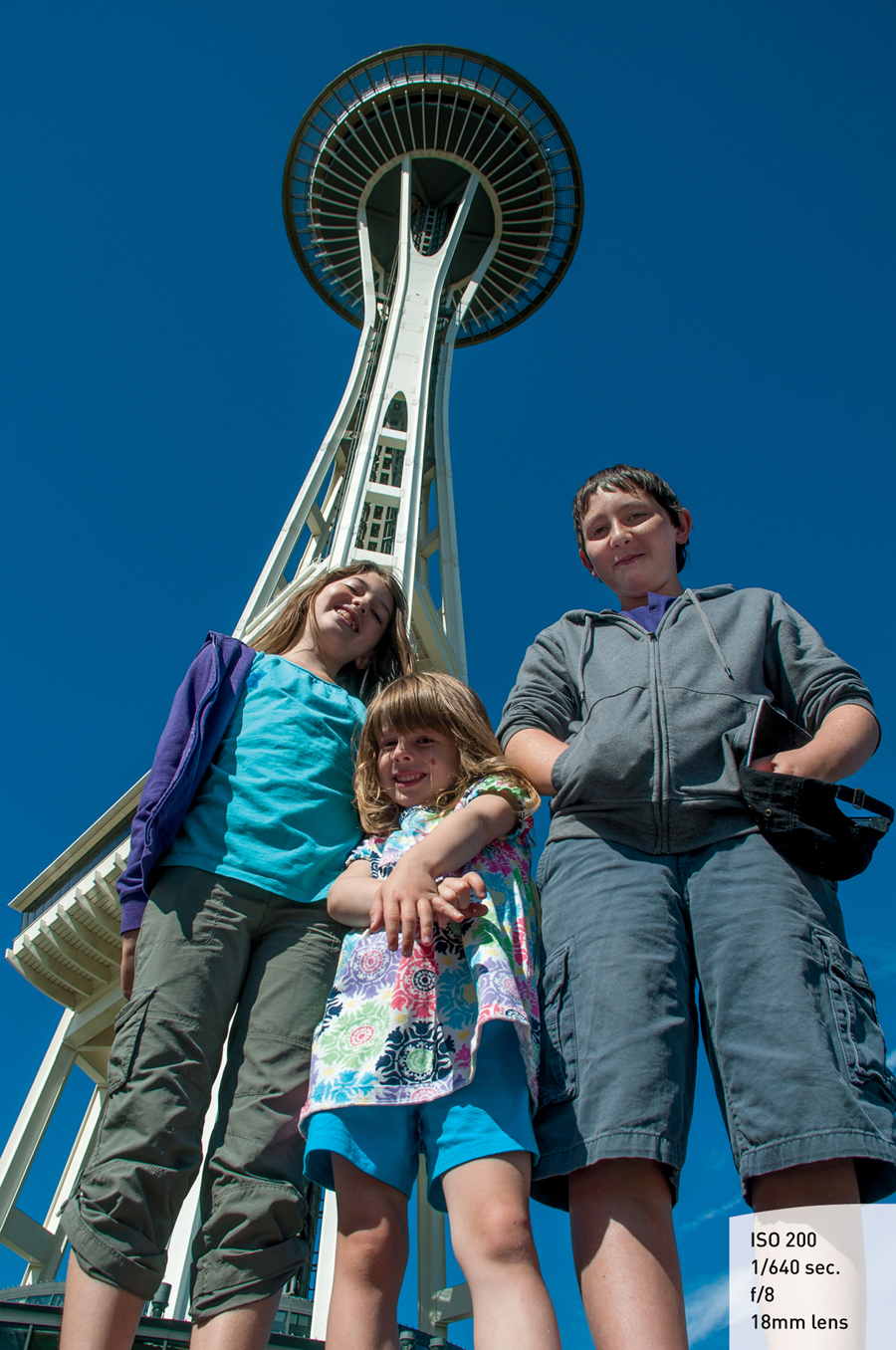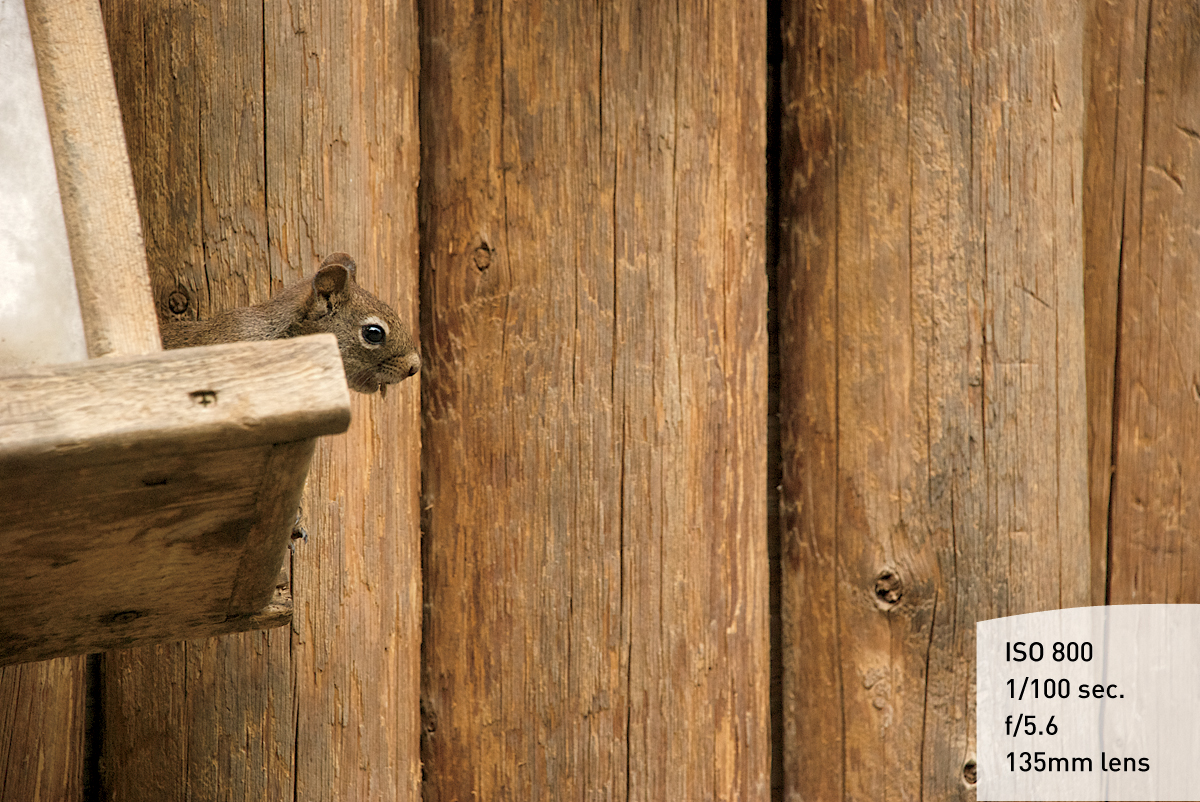9. Creative Compositions

Improve Your Pictures with Sound Compositional Elements
Creating a great photograph takes more than just using the right settings on your camera. To take your photography to the next level, you need to gain an understanding of how the elements within the frame come together to create a compositionally pleasing image. Composition is the culmination of light, shape, and, to borrow a word from the iconic photographer Jay Maisel, gesture. Composition is a way for you to pull your viewing audience into your image and guide them through the scene. Let’s examine some common compositional elements you can use to add interest to your photos.
Poring Over the Picture
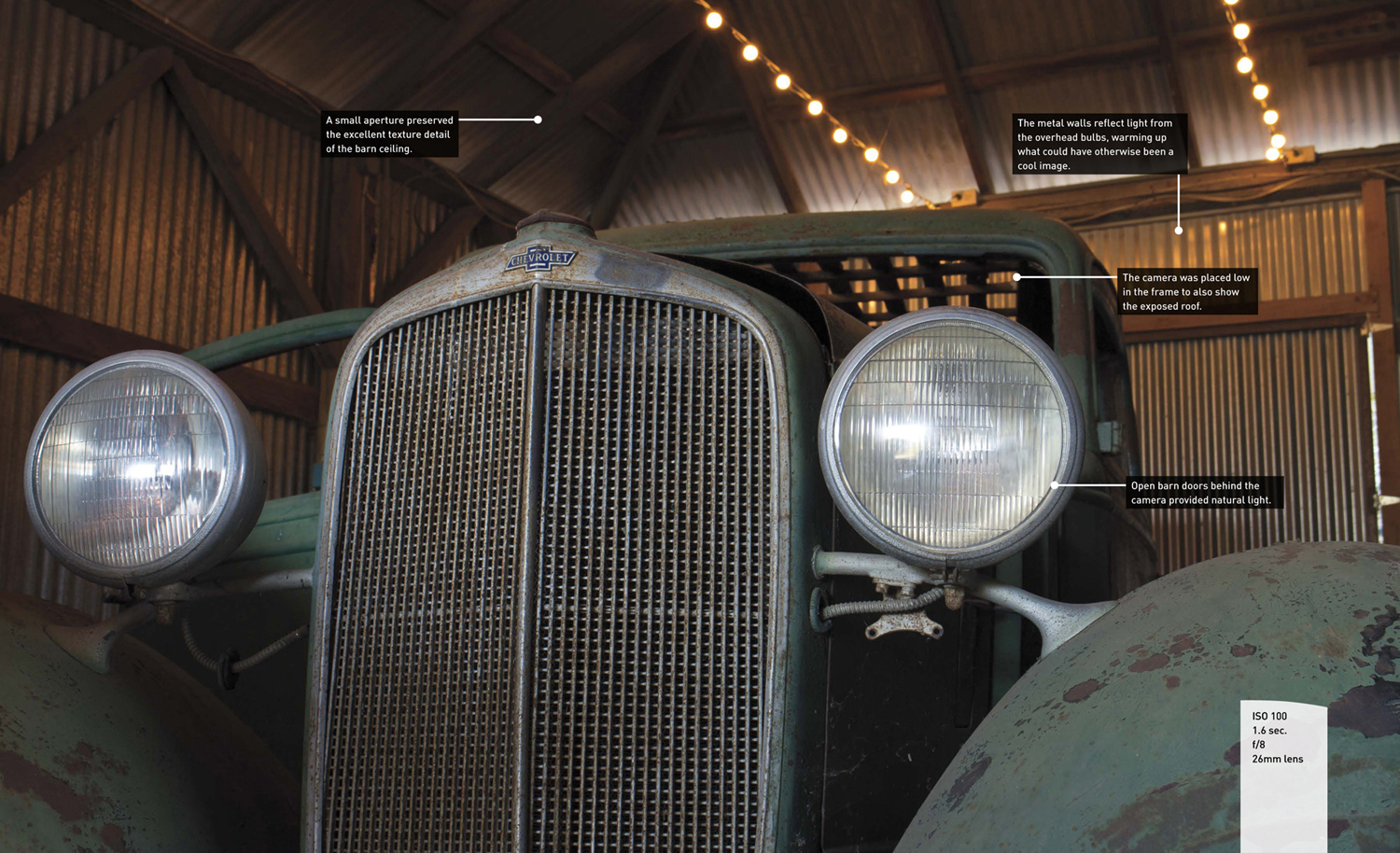
Getting a good photograph isn’t always about the camera settings. It’s also about how we frame the image in the viewfinder. When you are out taking photos, it’s easy to get lazy and only look at things from eye level, but in doing so you can miss out on new perspectives. I’ve wanted to shoot this 1933 Chevrolet at my mom’s farm for years and I finally got a good opportunity. The lights and grill are striking, but by getting low and mounting the EOS M on a tripod I was able to also reveal the exposed roof and take advantage of the strings of lights overhead.

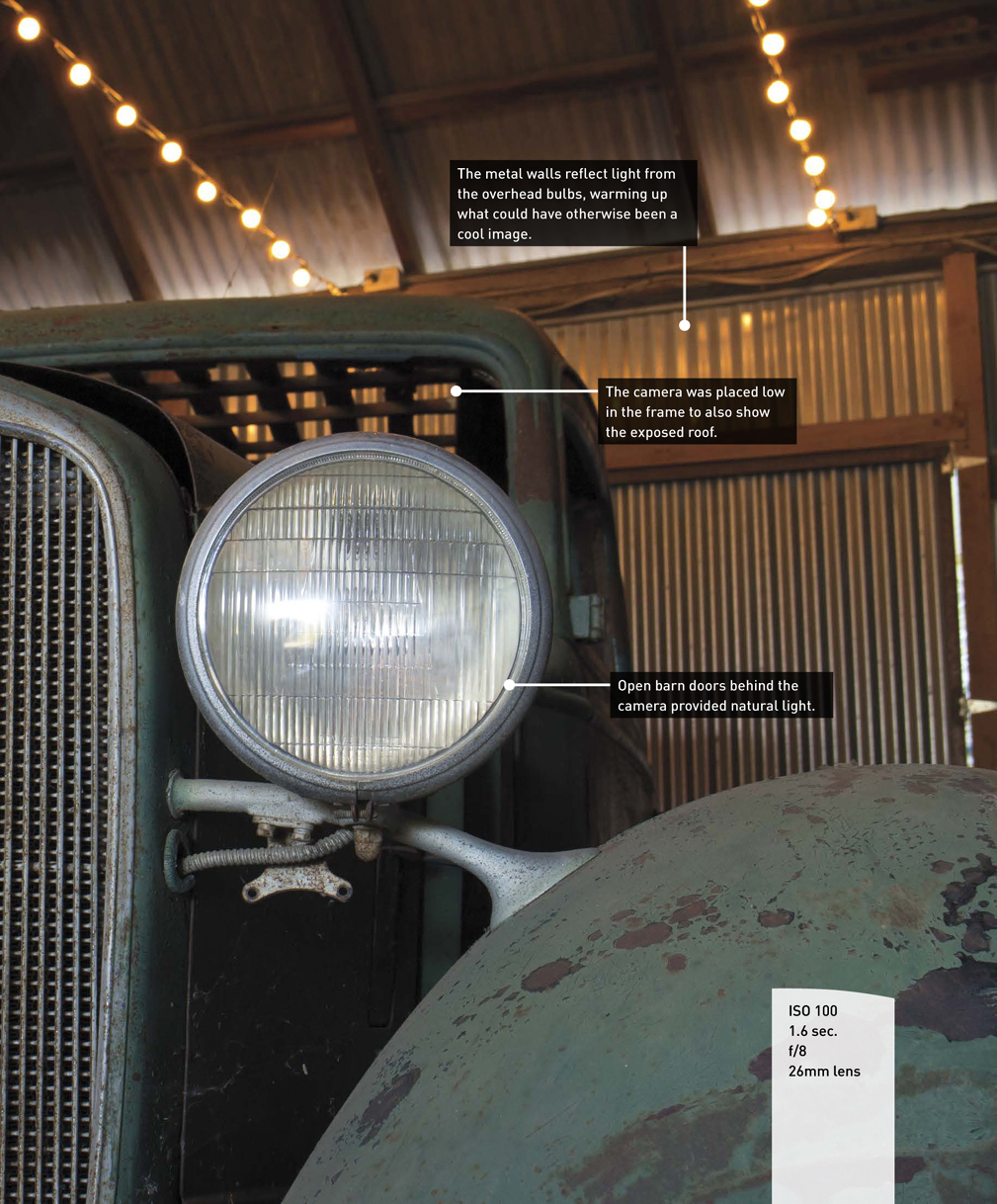
Poring Over the Picture

I can’t overemphasize how important it is to have a camera on hand even when you’re not expecting to do any shooting. I arrived at work one wonderfully foggy morning and spent an hour capturing photos of the sun burning through the fog layer.
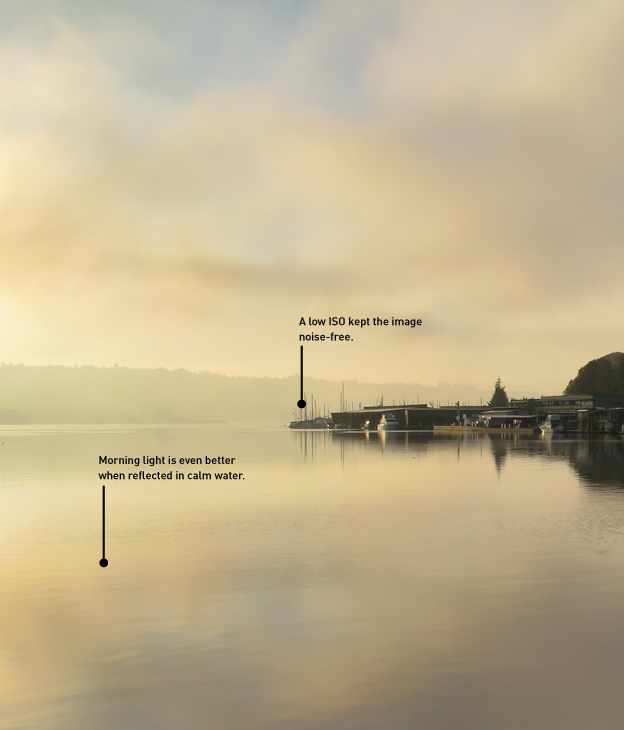

Depth of Field
Long focal lengths and large apertures allow you to isolate your subject from the chaos that surrounds it. I utilize the Av mode for the majority of my shooting. I also like to use a longer focal length lens to shrink the depth of field to a very narrow area (Figure 9.1).
Figure 9.1. A large aperture setting can create a shallow depth of field to isolate the subject.
The blurred background and foreground force the viewer’s eye toward the sharper, in-focus areas, which gives greater emphasis to the subject.
Occasionally, a greater depth of field is required to maintain sharp focus across a greater distance. This might be due to the sheer depth of your subject, where you have objects that are near the camera but sharpness is desired at a greater distance as well (Figure 9.2).
Figure 9.2. Getting sharp focus from near to far requires a small aperture setting. A wide-angle lens doesn’t hurt either.
Or perhaps you are photographing a reflection in a puddle. With a narrow depth of field, you would only be able to get either the reflected object or the puddle in focus. By making the aperture smaller, you will be able to maintain acceptable sharpness in both areas (Figure 9.3).
Figure 9.3. Getting a distant subject in focus in a reflection, along with the reflective surface, requires a small aperture.
Angles
Having strong angular lines in your image can add to the composition, especially when they are juxtaposed to each other (Figure 9.4). This can create a tension that is different from the standard horizontal and vertical lines that we are so accustomed to seeing in photos.
Figure 9.4. The strong angular lines of the buildings create a dynamic composition.
Point of View
Sometimes the easiest way to influence your photographs is to simply change your perspective. Instead of always shooting from a standing position, try moving your camera to a place where you normally would not see your subject. Try getting down on your knees or even lying on the ground. This low angle can completely change how you view your subject and can create a new interest in common subjects (Figure 9.5).
Figure 9.5. Put your camera into a position that presents an unfamiliar view of your subject.
Patterns
Rhythm and balance can be added to your images by finding the patterns in everyday life and concentrating on the elements that rely on geometric influences. Try to find the balance and patterns that often go unnoticed (Figure 9.6).
Figure 9.6. Stairs make great patterns in photos, with endless variations all around you.
Color
Color works well as a tool for composition when you have very saturated colors to work with. Some of the best colors are those within the primary palette. Reds, greens, and blues, along with their complementary colors (cyan, magenta, and yellow), can all be used to create visual tension (Figure 9.7). This tension between bright colors will add visual excitement, drama, and complexity to your images when combined with other compositional elements.
Figure 9.7. These leaves were just on the cusp of changing, the warm strokes contrasting with the green in the background.
You can also use a color as a theme for your photography. That can be shooting a blue sky that acts as a pleasing color contrast or picking up a color that’s prevalent in a scene (Figure 9.8).
Figure 9.8. This squirrel stealing bird food was almost invisible from far away.
Contrast
We just saw that you can use color as a strong compositional tool. One of the most effective uses of color is to combine two contrasting colors that make the eye move back and forth across the image (Figure 9.9). There is no exact combination that will work best, but consider using dark and light colors, like red and yellow or blue and yellow, to provide the strongest contrasts.
Figure 9.9. The bright colors of the kayaks really pop on this foggy morning.
You can also introduce contrast through different geometric shapes that battle (in a good way) for the attention of the viewer. You can combine circles and triangles, ovals and rectangles, curvy and straight, hard and soft, dark and light, and so many more (Figure 9.10). You aren’t limited to just one contrasting element either. Combining more than one element of contrast will add even more interest. Look for these contrasting combinations whenever you are out shooting, and then use them to shake up your compositions.
Figure 9.10. The orange wall contrasts with the gray cement, but the angled boots also break from the vertical and horizontal lines throughout the image.
Leading Lines
One way to pull a viewer into your image is to incorporate leading lines. These are elements that come from the edge of the frame and then lead into the image toward the main subject (Figure 9.11). This can be the result of vanishing perspective lines, an element such as a river, or some other feature used to move from the outer edge in to the heart of the image.
Figure 9.11. The perspective of the stall, and how the end of the wall splits the area between the girl and the horse, helps focus the eye on the subjects.
Splitting the Frame
With horizons, a low horizon will give a sense of stability to the image. Typically, this is done when the sky is more appealing than the landscape below (Figure 9.12). When the emphasis is to be placed on the landscape, the horizon line should be moved upward in the frame, leaving the bottom two-thirds to the subject.
Figure 9.12. The spectacular Olympic flame is more dramatic when viewed against a turbulent Vancouver sky.
Generally speaking, splitting the frame right down the middle is not necessarily your best option. While it may seem more balanced, it can actually be pretty boring. You should utilize the rule of thirds when deciding how to divide your frame (Figure 9.13).
Figure 9.13. The rule of thirds works on the left and right sides of the frame. Here, the bridge and reflection counterbalance the light source and clouds.
Chapter 9 Assignments
If you apply the shooting techniques and tools that you have learned in the previous chapters to these assignments, you’ll improve your ability to incorporate good composition into your photos. Make sure you experiment with all the different elements of composition and see how you can combine them to add interest to your images.
Learning to see lines and patterns
Take your camera for a walk around your neighborhood and look for patterns and angles. Don’t worry as much about getting great shots as about developing an eye for details.
The ABCs of composition
Here’s a great exercise: Shoot the alphabet. This will be a little more difficult, but with practice you will start to see beyond the obvious. Don’t just find letters in street signs and the like—instead, find objects that aren’t really letters but that have the shape of letters.
Finding the square peg and the round hole
Circles, squares, and triangles. Spend a few sessions concentrating on shooting simple geometric shapes.
Using the aperture to focus attention
Depth of field plays an important role in defining your images and establishing depth and dimension. Practice shooting wide open, using your largest aperture for the narrowest depth of field. Then find a scene that would benefit from extended depth of field, using very small apertures to give sharpness throughout the scene.
Leading them into a frame
Look for scenes where you can use elements as leading lines, and then look for framing elements that you can use to isolate your subject and add both depth and dimension to your images.
Share your results with the book’s Flickr group!
Join the group here: flickr.com/groups/eosmfromsnapshotstogreatshots

